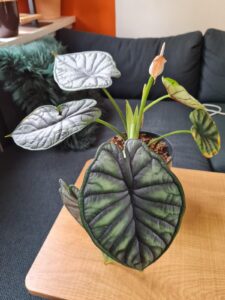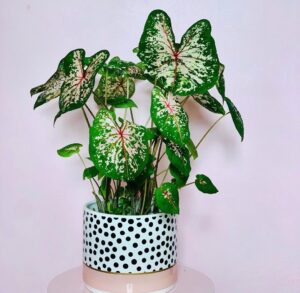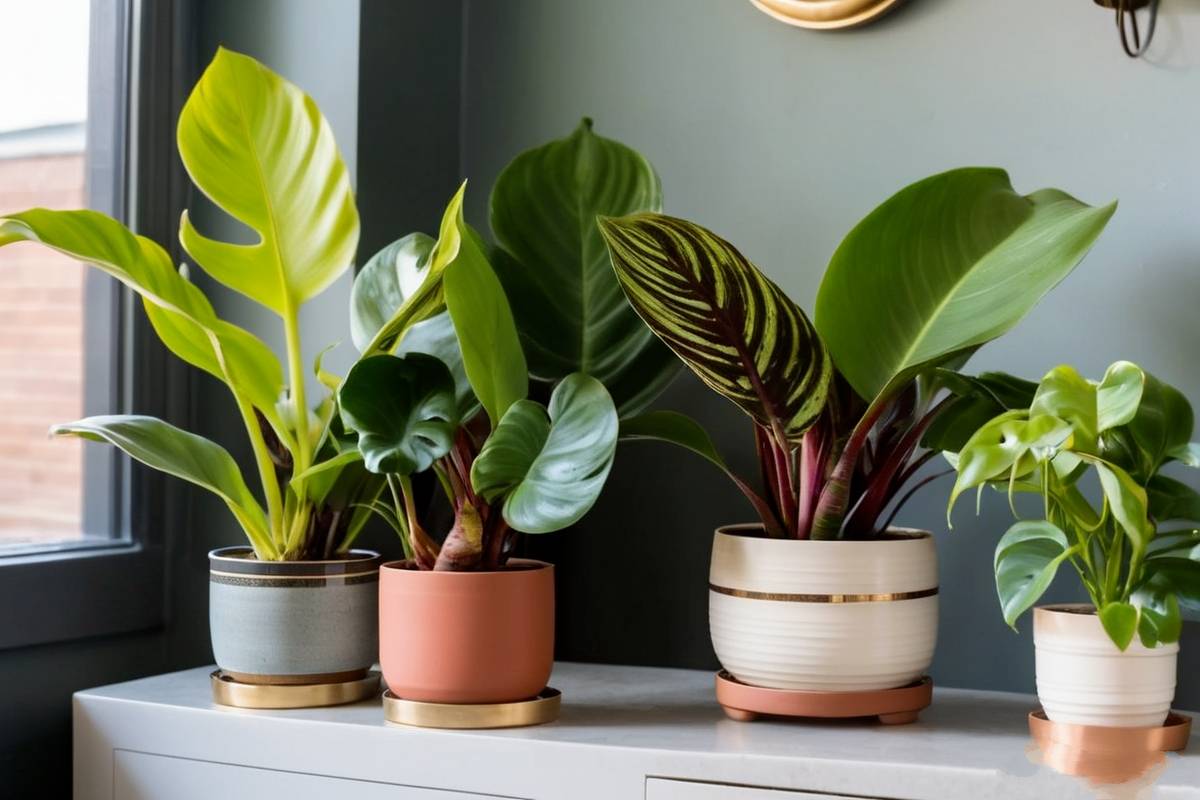
Today, I am thrilled to share with you my top dream houseplants that will add a touch of magic to any living space. Some of these are out of my price range at the moment, but a girl can dream!
In this article
Dragonscale Albo
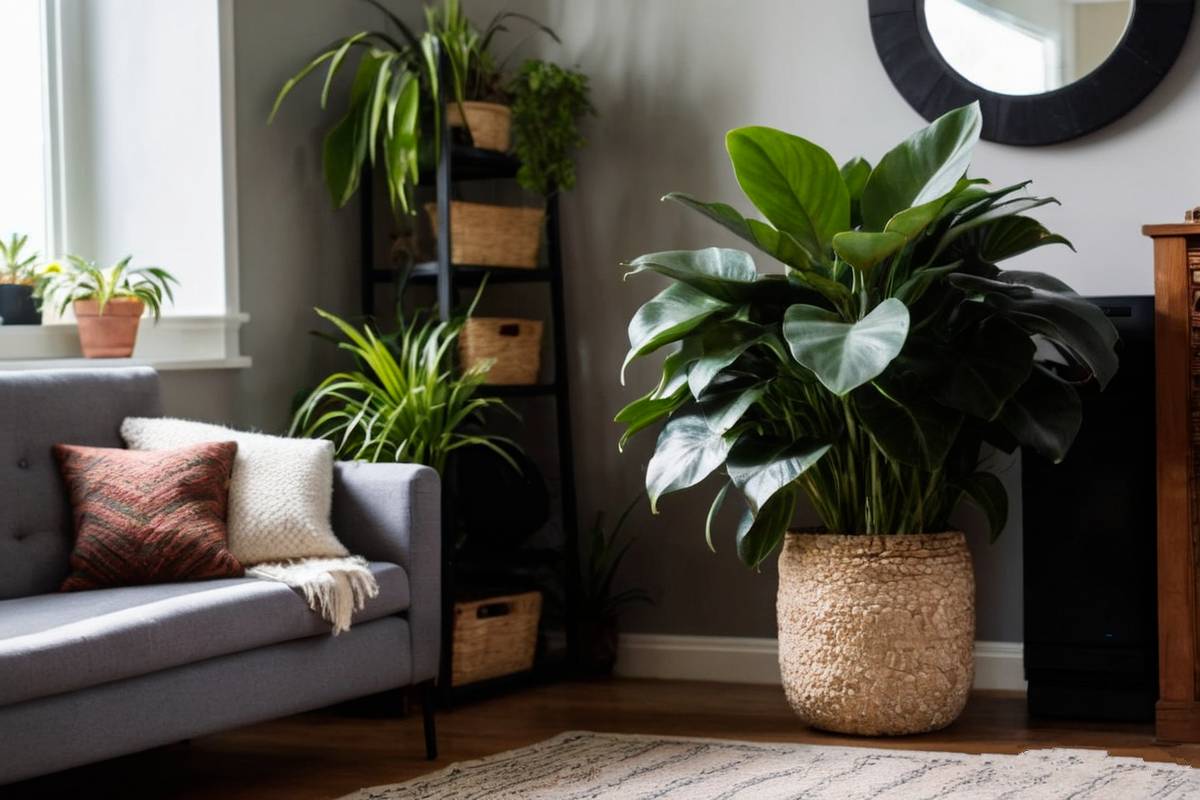
The Dragonscale Albo (Philodendron erubescens ‘Dragonscale Albo’), is a true gem among houseplants. Its unique foliage features velvety, heart-shaped leaves with stunning variegation. The leaves showcase a beautiful blend of dark green hues and silver-white scales, resembling the mythical scales of a dragon. This plant is a dream for any plant lover who seeks a touch of enchantment in their indoor garden.
Great for People who: Want to add a touch of exotic allure to their home.
Great for these Spaces: A room with ample natural light and a cozy corner that deserves a botanical focal point.
Caring for Dragonscale Albo: This plant thrives in bright, indirect light and prefers well-draining soil. Keep the soil slightly moist, but avoid overwatering as it can lead to root rot. Regular misting will help maintain the humidity levels it craves.
Toxicity Level of Dragonscale Albo: While the Dragonscale Albo is not considered highly toxic, it is always best to keep it out of reach of curious pets and children. Ingestion may cause mild gastrointestinal discomfort.
Light Requirements for Dragonscale Albo: This plant thrives in bright, indirect light. Avoid exposing it to direct sunlight, as it can scorch the leaves.
Watering the Dragonscale Albo: Water the plant when the top inch of soil feels dry. Ensure proper drainage to prevent waterlogging.
RELATED: My Top 5 Beautiful Houseplants
Black Velvet Alocasia
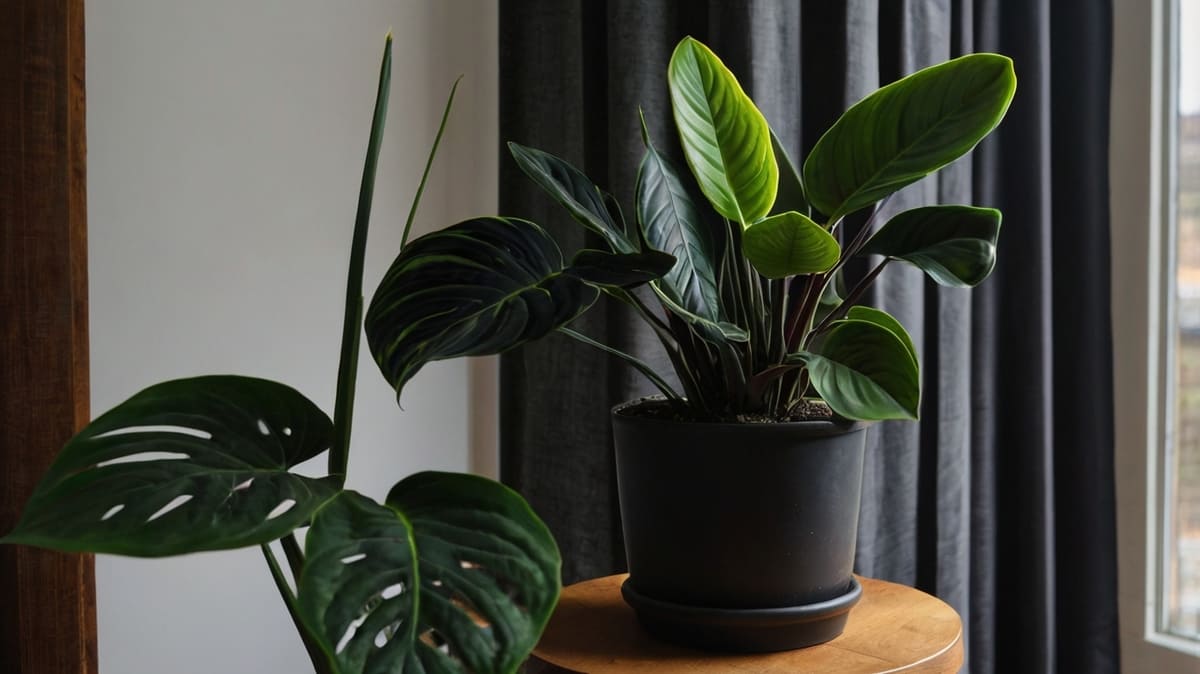
Prepare to be captivated by the mesmerizing beauty of the Black Velvet (Alocasia reginula). This stunning houseplant boasts velvety, heart-shaped leaves with a deep, rich shade of purple-black. The velvety texture of its foliage adds an extra layer of intrigue, making it a dream houseplant for those who appreciate elegance and sophistication. There are 25 stunning Alocasia varieties to choose from.
Great for People who: Desire a plant that exudes elegance and makes a bold statement in their living space.
Great for these Spaces: A well-lit room with moderate humidity levels, such as a study or a cozy reading nook.
Caring for Black Velvet: The Black Velvet thrives in bright, indirect light and prefers well-draining soil. Keep the soil consistently moist, but avoid overwatering to prevent root rot. Mist the leaves regularly to maintain the desired humidity.
Toxicity Level of Black Velvet: This plant is considered toxic if ingested, so it’s important to keep it away from pets and children. Contact with the sap may cause skin irritation in some individuals.
Light Requirements for Black Velvet: Provide bright, indirect light to the Pink Black Velvet. Avoid exposing it to direct sunlight, as it can scorch the leaves.
Watering the Black Velvet: Water the plant when the top inch of soil feels slightly dry. Ensure proper drainage to prevent waterlogging.
Thai Con Aglaonema
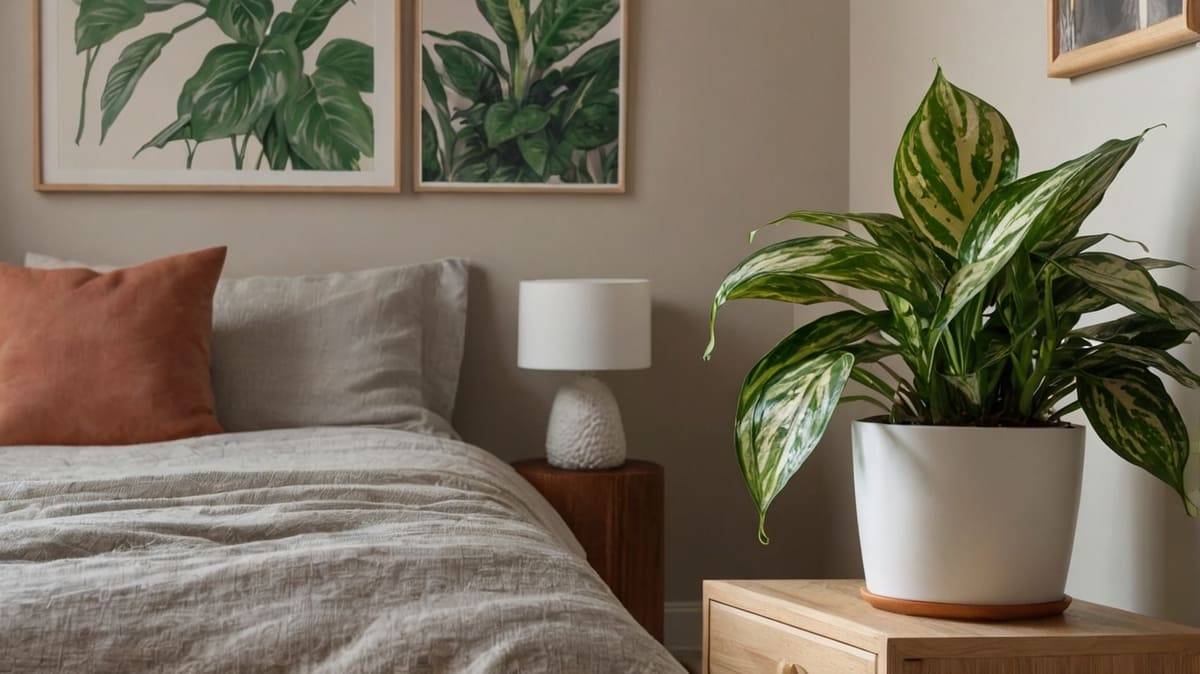
The Thai con is a stunning houseplant that emanates an air of tranquillity and elegance. Its lush, green leaves are adorned with delicate silver markings, creating a captivating contrast. This plant is a dream for those who seek a touch of serenity and sophistication in their indoor sanctuary.
Great for People who: Crave a plant that brings a sense of calm and serenity to their living space.
Great for these Spaces: A well-lit room with moderate humidity levels, such as a bedroom or a cozy corner for relaxation.
Caring for Thai con: The Thai con thrives in medium to low light conditions and prefers well-draining soil. Allow the soil to dry slightly between waterings, as overwatering can lead to root rot. This plant appreciates regular misting to maintain the desired humidity.
Toxicity Level of Thai con: The Thai con is considered mildly toxic if ingested. It is advisable to keep it out of reach of pets and children.
Light Requirements for Thai con: This plant thrives in medium to low light conditions. Avoid exposing it to direct sunlight, as it can scorch the leaves.
Watering the Thai con: Water the plant when the top inch of soil feels slightly dry. Ensure proper drainage to prevent waterlogging.
RELATED: Thai Con Aglaonema Care Made Easy
Alocasia Amazonica Polly
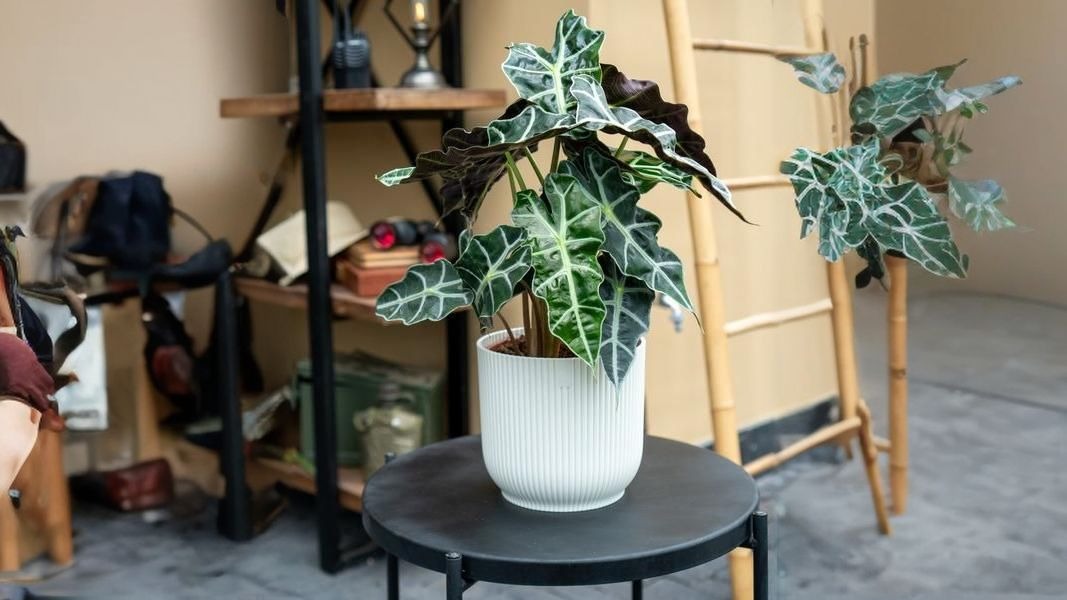
Alocasia Amazonica is arguably the most popular and sought-after variety of alocasia. This hybrid is created by crossing Alocasia longiloba and Alocasia sanderiana and can be cultivated in pots or directly in the garden. Despite its name, Alocasia Amazonica has no connection to the Amazon. Instead, it is named after the Amazon Nursery in Miami, Florida, where the cultivar originated. Also known as the African Mask Plant, the Alocasia Amazonica Polly is a true showstopper.
The leaves of Alocasia Polly are remarkably large and arrow-shaped, reaching up to 20 inches in length and approximately ten inches in width. They are dark green with striking bright white or creamy veins, and the off-white edges elegantly outline the leaf blade.
Great for People who: Want to add some tropical vibes to their home. If you’re longing for a touch of the tropics in your home, the Alocasia Amazonica Polly is the perfect choice. With its large, arrow-shaped leaves and vibrant green color, this plant brings a sense of exotic beauty to any space.
Great for these Spaces: The Alocasia Amazonica Polly is a great choice for rooms with higher ceilings. With its tall and upright growth habit, this plant adds vertical interest to any space.
Caring for Alocasia Amazonica Polly: While the Alocasia Amazonica Polly is a stunning plant, it does require a bit of care to thrive. It prefers bright, indirect light and thrives in temperatures between 60-85°F (15-29°C). It’s important to keep the soil consistently moist but not soggy, as overwatering can lead to root rot. Regular misting or placing the plant on a pebble tray can help increase humidity, which the Alocasia Amazonica Polly loves.
It’s worth noting that the Alocasia Amazonica Polly is not the easiest plant for beginners. It requires a bit more attention and care compared to some other houseplants. However, with the right knowledge and dedication, anyone can successfully care for this stunning plant.
Toxicity Level of Alocasia Amazonica Polly: When it comes to toxicity, it’s important to be aware that the Alocasia Amazonica Polly is considered toxic to both humans and pets. If you have curious pets, it’s best to opt for pet-friendly houseplants instead.
Light Requirements for Alocasia Amazonica Polly: The Alocasia Amazonica Polly thrives in bright, indirect light. It prefers a location near a window where it can receive filtered sunlight. However, direct sunlight should be avoided, as it can scorch the leaves. If you notice the leaves turning yellow or brown, it may be a sign that the plant is receiving too much light. Adjust its placement accordingly to ensure it gets the right amount of light.
Watering the Alocasia Amazonica Polly: Proper watering is crucial for the health of the Alocasia Amazonica Polly. It’s important to keep the soil consistently moist, but not waterlogged. Allow the top inch of soil to dry out slightly before watering again. Overwatering can lead to root rot, while underwatering can cause the leaves to droop and wilt.
Philodendron Spiritus Sancti
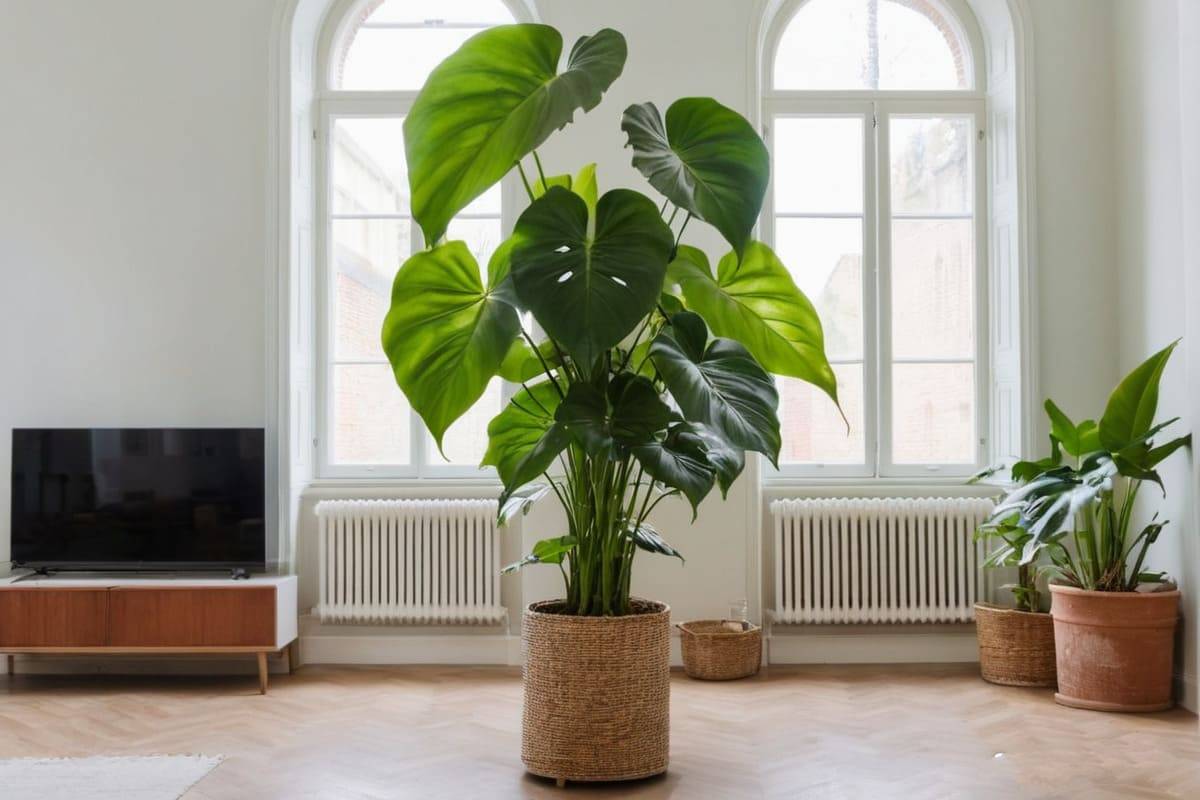
The Philodendron Spiritus Sancti is a rare and elusive plant that hails from the rainforests of Ecuador. With its velvety, dark green leaves and intricate patterns, this Philodendron variety is truly a sight to behold. Its unique foliage and limited availability make it a prized possession among plant collectors.
Great for People who: Seek a statement piece that will captivate the attention of anyone who enters their home. The Philodendron Spiritus Sancti’s unique leaf shape and impressive size make it a perfect choice for those who want to create a bold and dramatic focal point in their living space.
Great for these Spaces: A room with higher ceilings. The Philodendron Spiritus Sancti can grow quite tall, so it requires ample vertical space to accommodate its growth.
Caring for Philodendron Spiritus Sancti: This plant requires intermediate care and is suitable for experienced plant enthusiasts. It thrives in well-draining soil and prefers to be watered when the top inch of soil feels slightly dry. It benefits from regular misting and occasional fertilization.
Toxicity Level of Philodendron Spiritus Sancti: The Philodendron Spiritus Sancti is considered toxic to pets and humans if ingested. It contains calcium oxalate crystals, which can cause irritation and discomfort if consumed. It is important to keep this plant out of reach of children and pets.
Light Requirements for Philodendron Spiritus Sancti: The Philodendron Spiritus Sancti thrives in bright, indirect light. It can tolerate lower light conditions, but it may result in slower growth and less vibrant foliage. Place it near a window with filtered light for optimal growth.
Watering the Philodendron Spiritus Sancti: Water the plant when the top inch of soil feels slightly dry. Avoid overwatering as it can lead to root rot. Ensure proper drainage to prevent waterlogging.
Alocasia Frydek Variegata
The Alocasia Frydek Variegata (Alocasia micholitziana ‘Frydek Variegata’), is a stunning houseplant with its unique variegated foliage. The leaves display a beautiful combination of green and white variegation, creating a striking contrast that adds a touch of elegance to any space. This plant is a dream houseplant for those who appreciate the beauty of variegation and want to add a tropical vibe to their indoor garden.
Great for People who: Want to add some tropical vibes to their home. The Alocasia Frydek Variegata’s lush and exotic foliage makes it a perfect choice for those who want to create a mini tropical paradise within their living space.
Great for these Spaces: A room with higher humidity levels. The Alocasia Frydek Variegata thrives in humid environments, so placing it in a bathroom or near a humidifier can help promote its growth.
Caring for Alocasia Frydek Variegata: This plant requires intermediate care and is suitable for plant enthusiasts with some experience. It prefers well-draining soil and should be watered when the top inch of soil feels slightly dry. Regular misting and occasional fertilization will help maintain its lush foliage.
Toxicity Level of Alocasia Frydek Variegata: TheAlocasia Frydek Variegata is considered toxic to pets and humans if ingested. It contains calcium oxalate crystals, which can cause irritation and discomfort if consumed. It is important to keep this plant out of reach of children and pets.
Light Requirements for Alocasia Frydek Variegata: The Alocasia Frydek Variegata thrives in bright, indirect light. It can tolerate lower light conditions, but it may result in slower growth and less vibrant variegation. Place it near a window with filtered light for optimal growth.
Watering the Alocasia Frydek Variegata: Water the plant when the top inch of soil feels slightly dry. Avoid overwatering as it can lead to root rot. Ensure proper drainage to prevent waterlogging.
Calathea
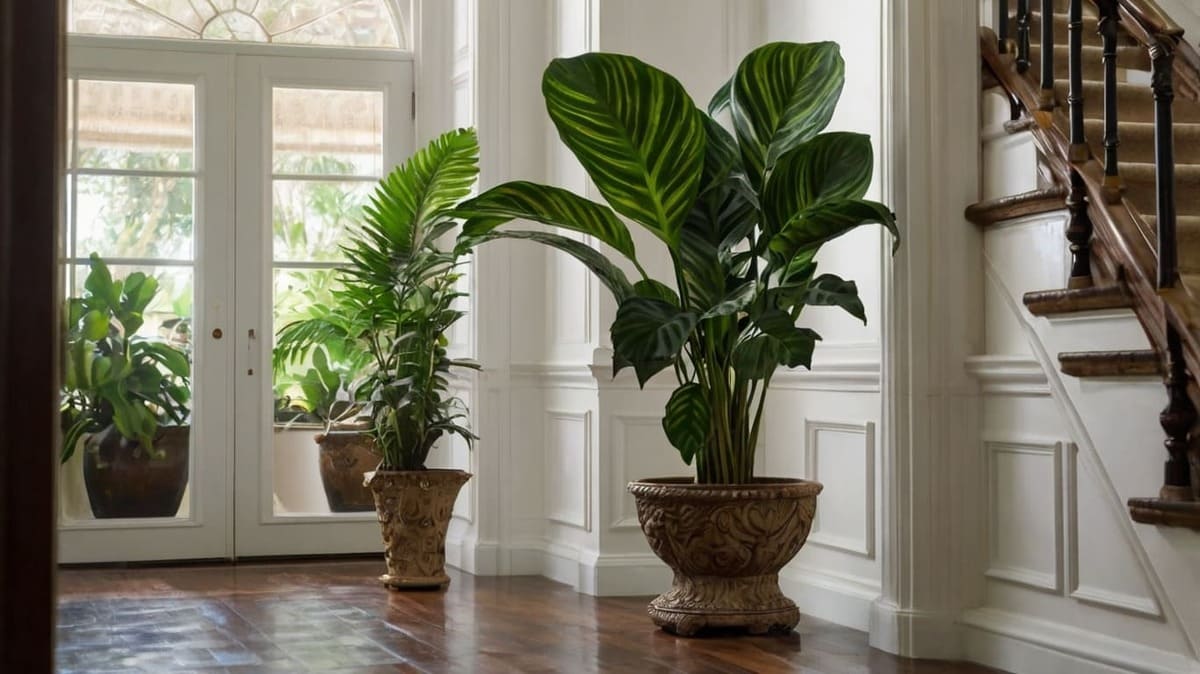
The Calathea is a true showstopper with its beautiful and unique foliage. Its large leaves come in a variety of patterns and colors, ranging from vibrant greens to deep purples. This plant is a dream houseplant for many due to its striking appearance and ability to add a touch of tropical vibes to any home.
Great for People who: Who want to add some tropical vibes to their home. The Calathea’s lush foliage and vibrant colors bring a sense of the exotic to any space. It is perfect for those who appreciate the beauty of nature and want to create a relaxing and serene atmosphere in their home.
Great for these Spaces: A room with higher ceilings. The Calathea is known for its tall and graceful leaves, which can reach impressive heights. It thrives in spaces with higher ceilings, where it can showcase its full potential and create a dramatic focal point.
Caring for Calathea: The Calathea requires moderate care and is suitable for both beginners and experienced plant enthusiasts. It prefers bright, indirect light and thrives in humid environments. Regular watering is essential to keep the soil moist but not soggy. It is important to avoid overwatering, as this can lead to root rot.
Toxicity Level of Calathea: The Calathea is non-toxic to both humans and pets, making it a safe choice for households with children and animals. However, it is always a good idea to keep any plant out of reach of curious pets or small children to prevent accidental ingestion.
Light Requirements for the Calathea: The Calathea thrives in bright, indirect light. It is best to place it near a window where it can receive filtered sunlight. Avoid exposing it to direct sunlight, as this can scorch the leaves and cause damage to the plant.
Watering the Calathea: The Calathea prefers to be kept consistently moist but not waterlogged. Water it when the top inch of soil feels dry to the touch. It is important to use room temperature water and avoid letting the plant sit in standing water, as this can lead to root rot.
Philodendron Ring of Fire

This plant is perfect for people who want to add a bold and vibrant touch to their home decor. The Philodendron Ring of Fire’s striking foliage and unique coloration make it a perfect choice for those who want to make a statement with their houseplants.
Great for these Spaces: A well-lit room with ample space. The Philodendron Ring of Fire thrives in bright, indirect light and requires enough space for its trailing vines to grow. It can be placed on a shelf or in a hanging basket to showcase its cascading foliage.
Caring for Philodendron Ring of Fire: The Philodendron Ring of Fire is a relatively easy-to-care-for plant, making it suitable for both beginners and experienced plant enthusiasts. It prefers well-draining soil and should be watered when the top inch of soil feels dry. This plant thrives in temperatures between 65-85°F (18-29°C) and appreciates higher humidity levels.
Toxicity Level of Philodendron Ring of Fire: The Philodendron Ring of Fire is toxic to both humans and pets if ingested. It contains calcium oxalate crystals, which can cause irritation and swelling of the mouth and throat. It is important to keep this plant out of reach of children and pets and to wash your hands after handling it.
Light Requirements for Philodendron Ring of Fire: The Philodendron Ring of Fire thrives in bright, indirect light. It can tolerate lower light conditions but may lose some of its vibrant coloration. Place it near a window where it can receive filtered sunlight for a few hours each day.
Watering the Philodendron Ring of Fire: When it comes to watering, the Philodendron Ring of Fire prefers to be kept slightly moist but not overly saturated. Water the plant when the top inch of soil feels dry, and ensure that the pot has drainage holes to prevent water from sitting in the bottom. Avoid overwatering, as it can lead to root rot.
El Choco Red Philodendron
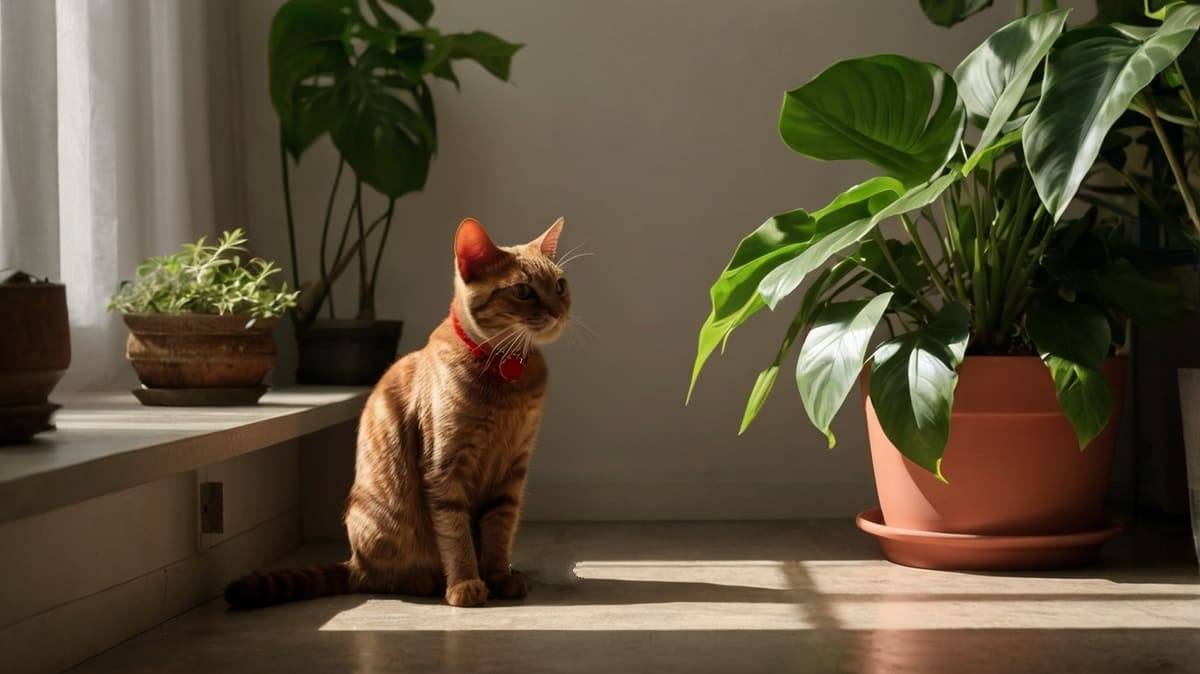
The El Choco Red Philodendron (Philodendron El Choco Red) is a stunning houseplant with deep red leaves that add a touch of drama and sophistication to any space. Its velvety foliage and compact growth habit make it an excellent choice for both small and large indoor gardens. This plant is sure to be a conversation starter and a focal point in your home.
Great for People who: Who want to create a bold and dramatic atmosphere in their home. The Philodendron El Choco Red’s rich red foliage and compact size make it a perfect choice for those who want to make a statement with their houseplants.
Great for these Spaces: A well-lit corner or tabletop. The Philodendron El Choco Red thrives in bright, indirect light and can be placed in a corner or on a tabletop to showcase its vibrant foliage. Its compact size makes it suitable for smaller spaces.
Caring for Philodendron El Choco Red: The Philodendron El Choco Red is a relatively low-maintenance plant, making it suitable for beginners. It prefers well-draining soil and should be watered when the top inch of soil feels dry. This plant thrives in temperatures between 65-85°F (18-29°C) and appreciates higher humidity levels.
Toxicity Level of Philodendron El Choco Red: The Philodendron El Choco Red is toxic to both humans and pets if ingested. It contains calcium oxalate crystals, which can cause irritation and swelling of the mouth and throat. It is important to keep this plant out of reach of children and pets and to wash your hands after handling it.
Light Requirements for Philodendron El Choco Red: The Philodendron El Choco Red thrives in bright, indirect light. It can tolerate lower light conditions but may lose some of its vibrant coloration. Place it near a window where it can receive filtered sunlight for a few hours each day.
Watering the Philodendron El Choco Red: When it comes to watering, the Philodendron El Choco Red prefers to be kept slightly moist but not overly saturated. Water the plant when the top inch of soil feels dry, and ensure that the pot has drainage holes to prevent water from sitting in the bottom. Avoid overwatering, as it can lead to root rot.
Chameleon ZZ Plant

The Chameleon ZZ Plant (Zamioculcas zamiifolia ‘Chameleon’) is a unique and eye-catching houseplant that features variegated leaves with shades of green, yellow, and white. This plant adds a touch of whimsy and charm to any space, making it a perfect choice for those who want to create a playful and vibrant indoor garden.
Great for People who: Who want to add a pop of color and playfulness to their home. The Chameleon ZZ Plant’s variegated foliage and unique coloration make it a perfect choice for those who want to break away from traditional green houseplants.
Great for these Spaces: A well-lit living room or office space. The Chameleon ZZ Plant thrives in bright, indirect light and can be placed in a living room or office space to add a touch of vibrancy. Its compact size makes it suitable for smaller spaces.
Caring for Chameleon ZZ Plant: The Chameleon ZZ Plant is a relatively low-maintenance plant, making it suitable for beginners. It prefers well-draining soil and should be watered when the top inch of soil feels dry. This plant thrives in temperatures between 60-75°F (15-24°C) and can tolerate lower light conditions.
Toxicity Level of Chameleon ZZ Plant: The Chameleon ZZ Plant is toxic to both humans and pets if ingested. It contains calcium oxalate crystals, which can cause irritation and swelling of the mouth and throat. It is important to keep this plant out of reach of children and pets and to wash your hands after handling it.
Light Requirements for Chameleon ZZ Plant: The Chameleon ZZ Plant thrives in bright, indirect light but can also tolerate lower light conditions. Place it near a window where it can receive filtered sunlight for a few hours each day.
Watering the Chameleon ZZ Plant: When it comes to watering, the Chameleon ZZ Plant prefers to be kept slightly moist but not overly saturated. Water the plant when the top inch of soil.
Chinese Money Plant (Pilea)
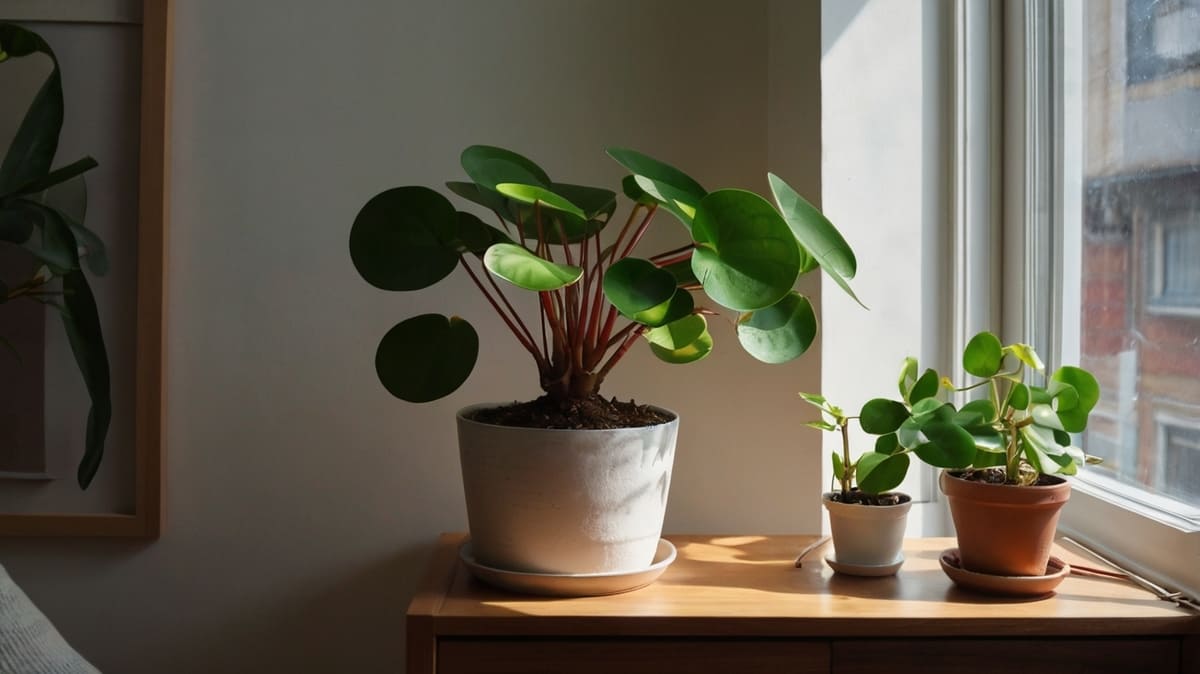
The Pilea (Pilea peperomioides), also known as the Chinese Money Plant, is a true gem in the world of houseplants. With its unique round leaves and delicate appearance, it adds a touch of whimsy and charm to any space. Its vibrant green foliage and compact size make it a dream houseplant for those looking to bring a little bit of nature indoors.
Great for People who: Who want to add a touch of freshness and liveliness to their home. The Pilea’s compact size and attractive foliage make it an ideal choice for small spaces or those looking to create a cozy corner filled with greenery. Its unique appearance is sure to spark conversations and bring a sense of joy to any plant enthusiast.
Great for these Spaces: A room with ample natural light. The Pilea thrives in bright, indirect light, making it perfect for spaces with large windows or well-lit areas. Placing it near a window will allow it to soak up the sunlight it craves, resulting in healthy growth and vibrant foliage.
Caring for Pilea: The Pilea is a relatively low-maintenance plant, making it suitable for both beginners and experienced plant parents. It prefers well-draining soil and requires regular watering to keep the soil evenly moist. However, be cautious not to overwater, as this can lead to root rot. Additionally, the Pilea enjoys moderate humidity, so misting its leaves or placing a tray of water nearby can help create the ideal environment for this dream houseplant.
Toxicity Level of Pilea: Good news for pet owners and families with curious little ones—the Pilea is non-toxic to both humans and pets. You can enjoy its beauty and charm without worrying about any harmful effects. However, it’s always important to keep an eye on children and pets to ensure they don’t accidentally damage the plant or ingest any non-edible parts.
Light Requirements for the Pilea: The Pilea thrives in bright, indirect light. It prefers a spot near a window where it can receive filtered sunlight throughout the day. Avoid placing it in direct sunlight, as this can scorch the leaves and cause damage to the plant. Finding the perfect balance of light will result in healthy growth and vibrant foliage.
Watering the Pilea: When it comes to watering the Pilea, it’s essential to strike a balance. Allow the top inch of soil to dry out between waterings, and then water thoroughly until it drains out of the bottom of the pot. Avoid letting the plant sit in standing water, as this can lead to root rot. Regularly check the soil moisture and adjust your watering schedule accordingly.
With its charming appearance and easy-care requirements, the Pilea is truly a dream houseplant that can bring life and beauty to any home. Stay tuned as we continue our journey through the top 47 dream houseplants, each one more captivating than the last. Happy gardening!
As much as I would love to fill my home with these dream houseplants, my wallet is currently in a state of mourning. Alas, these botanical beauties will have to remain in the realm of dreams for now. But hey, a plant lover can dream, right?
So, while I may not be able to afford them at the moment, I’ll continue to admire them from afar.
Until then, happy gardening!


